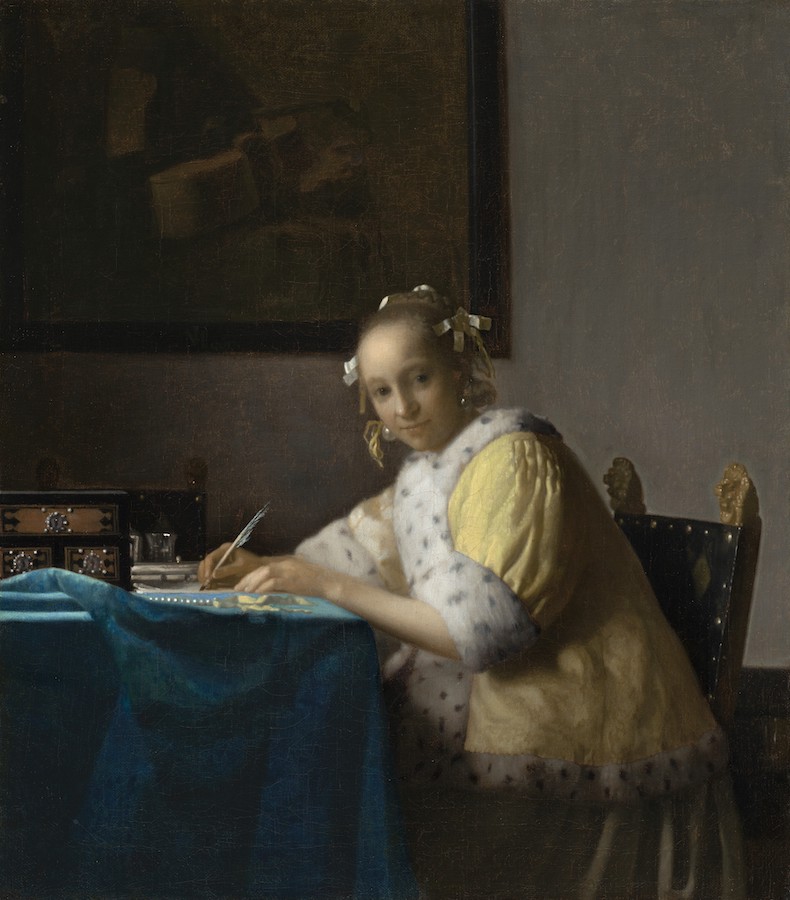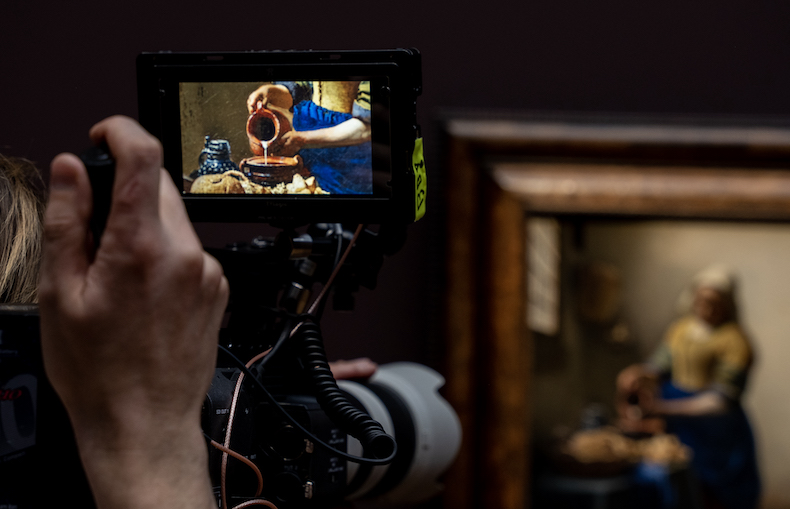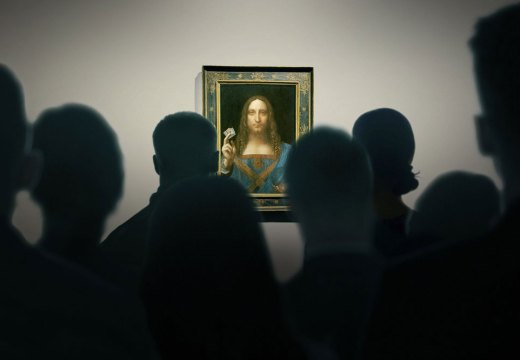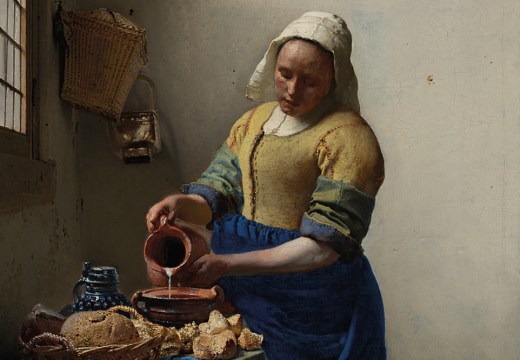The art of Johannes Vermeer, declares Rijksmuseum director Taco Dibbits in Vermeer: The Greatest Exhibition, ‘makes us realise what it is to be human’. The statement feels so crucial that it is said twice; first within the opening minutes of the film, and later to conclude 90 minutes of a gently paced, warmly enthusiastic evaluation of the Dutch painter’s works. Dibbits, other museum staff and art critic Rachel Campbell-Johnston all marvel at the detail of the painter’s work (not a brushstroke to be seen!), remark on his use of light and movement and wonder why these 16th-century portraits of domestic life continue to resonate today. Perhaps, Dibbits ventures, it is because they are not so alien. We still pour milk alone in our kitchens; work in quiet concentration at our desks; read and write in the privacy of our homes as sunlight spills in from adjoining windows.

A Lady Writing (1664–67), Johannes Vermeer
Created by the Exhibition on Screen company – whose recent productions include a film on a Cézanne show at the National Portrait Gallery and one on Pissarro at the Ashmolean – Vermeer: The Greatest Exhibition has arguably earned its right to be memorialised on screen. In February, the Rijksmuseum brought together 28 of the artist’s 37 known works for the largest Vermeer exhibition in its history, dubbed a ‘once in a lifetime’ event. Anticipation was high. More than 200,000 tickets were sold in advance; the website crashed, and it sold out within days. ‘Tickets are now about as precious a commodity as a flower bulb at the height of tulip mania,’ declared British Vogue.
For those who could not go, Vermeer: The Greatest Exhibition offers, in the words of its creators, ‘a privileged view of the exhibition’. The film is interspersed with expert commentary, loosely structured around the order of the show itself – we start in the first room with his early works, before moving to the well-known paintings and later work. The experience, at its best, feels like an impassioned and illuminating guided tour. We learn about the social mores in Vermeer’s hometown of Delft and how these influenced his work, while our attention is drawn to the smallest of details – a tinge of sunburn on a maid’s arm, strands of thread on a table. We are taken behind the scenes; a Rijksmuseum conservator is seen in a backroom examining a painting; an animation demonstrates how Vermeer changed the placement of figures as he worked, offering a rare glimpse into the painter’s compositional process: no preparatory drawings exist today. All 28 paintings are shown, most close up, before they are discussed. These shots are often so detailed that you can make out the cracked paint on the canvas.

The Milkmaid (1657–1658), Johannes Vermeer, as seen in Vermeer: The Greatest Exhibition. © David Bickerstaff
Viewers can learn a lot – though as with a guided tour, perhaps this comes at the expense of a more immediate encounter with the art. Sitting on the sofa, watching the commentary unfold on screen, I found myself lapsing into the passive spectatorship that characterises so much of media consumption today. As yet another painting appeared onscreen, I found myself thinking not about my own instinctive reactions but instead anticipating the explanations that would follow. And thus the inevitable question: can viewing a video from home ever replace the experience of being in the physical space of a gallery? Of weaving your way through its rooms, evaluating the marks on the canvas up close, and looking, focusing and thinking at your own pace? The film’s own interviewees suggest not. ‘You have to see them [the paintings] in real life,’ says Campbell-Johnston. ‘When you see them in real life you realise why they have attained their iconic status.’ Curators speak about Vermeer’s engagement with all the senses, particularly in his portraits that feature musical instruments, or about the excitement of working with a painting at close quarters.
The film feels like a complement to the exhibition, not a replacement. ‘This exhibition tries to get closer to Vermeer; this means you will be closer also to his faults,’ says curator Gregor J.M. Weber. However, in the film these faults are nary to be seen, filled as it is with testaments to the painter’s singular genius. This uniformly celebratory approach feels like the purpose of an exhibition film, but also its limitation. Seeing so many people standing outside a locked room, hoping to get in, Vermeer: The Greatest Exhibition calls you over to the keyhole and offers you a peep inside.
Vermeer: The Greatest Exhibition is now screening in cinemas worldwide.
Unlimited access from just $16 every 3 months
Subscribe to get unlimited and exclusive access to the top art stories, interviews and exhibition reviews.














![Masterpiece [Re]discovery 2022. Photo: Ben Fisher Photography, courtesy of Masterpiece London](http://www.apollo-magazine.com/wp-content/uploads/2022/07/MPL2022_4263.jpg)
Has arts punditry become a perk for politicos?